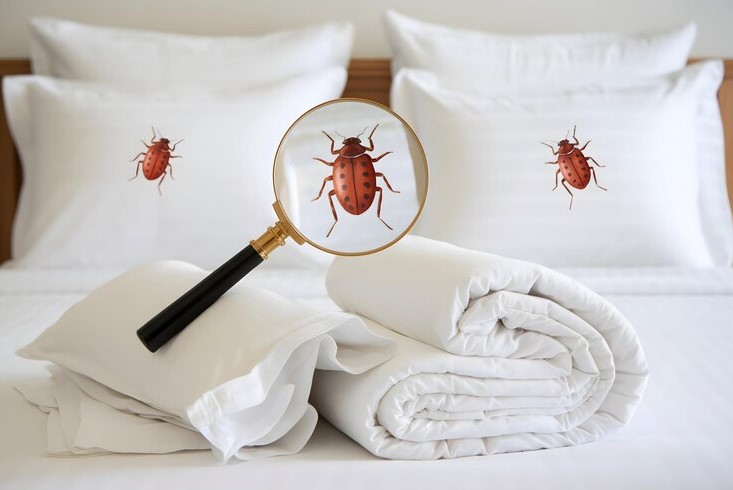
Bed bugs are among the most frustrating and persistent pests to deal with. Once they invade your home, they can be incredibly difficult to eradicate, leading to sleepless nights, itchy bites, and expensive treatments. However, one of the best ways to protect your home and your health from these elusive creatures is through early prevention and treatment. In this article, we’ll explore why early treatment is essential for preventing a bed bug infestation and how proactive measures can save you time, money, and stress.
1. Understanding the Bed Bug Problem
Bed bugs (Cimex lectularius) are small, nocturnal insects that feed on human blood. They are flat, oval-shaped, and reddish-brown in color, making them hard to spot, especially during the day. Bed bugs are notorious for hiding in cracks, crevices, and other hard-to-reach places. Their primary food source is human blood, which they obtain by feeding while their host sleeps.
While they don’t transmit diseases, bed bugs can cause significant physical discomfort. Their bites can result in red, itchy welts, allergic reactions, and even secondary infections from scratching. Worse, bed bugs reproduce rapidly, and one female bed bug can lay up to five eggs per day, which hatch into nymphs within 10 days. This reproductive rate means that a small infestation can quickly escalate into a major problem, making early treatment even more crucial.
2. Why Early Treatment is Important
Early detection and treatment of a bed bug infestation are critical for preventing the spread of these pests. Here’s why:
a) Prevention of a Larger Infestation
Bed bugs multiply at an alarming rate. A few bed bugs in your home may not seem like a big deal, but without early treatment, they can rapidly spread to other areas, such as your bedroom, living room, or even furniture. The longer you wait to address the issue, the more difficult and expensive it becomes to treat. Early intervention limits the scope of the infestation, preventing it from spreading to other rooms or homes.
b) Less Disruption to Your Daily Life
Dealing with a bed bug infestation can be highly disruptive to your daily life. You may need to move furniture, clean and sanitize your home, and go through an often-lengthy extermination process. The earlier the treatment, the less extensive the measures that need to be taken. Early intervention can significantly reduce the disruption to your routine, as smaller infestations are easier to manage and eradicate.
c) Minimizing Health Risks
Bed bugs are not known to transmit diseases, but their bites can cause allergic reactions and infections. Prolonged exposure to bed bug bites can lead to severe skin irritation, rashes, and even anxiety or sleep disturbances due to the constant worry of being bitten. By treating the infestation early, you reduce the risk of more severe health issues. Bed bugs can also trigger asthma or other allergic reactions in sensitive individuals, further emphasizing the importance of early treatment.
d) Lower Treatment Costs
Bed bug treatments can be costly, especially if you wait until the infestation has become widespread. Professional pest control services often require multiple treatments, the use of specialized equipment, and even the disposal of infested furniture or mattresses. Early detection and treatment, on the other hand, usually cost less because the infestation is smaller and can be resolved more easily. Taking action early helps prevent extensive damage to your property and ensures a more affordable treatment.
3. Signs of a Bed Bug Infestation
Knowing how to spot the early signs of a bed bug infestation is crucial in preventing further spread. Here are some common indicators:
- Bites and Red Marks: Bed bug bites are typically small, red, and itchy, often occurring in clusters or rows. If you wake up with unexplained bites on your body, especially after a night’s sleep, bed bugs might be the culprit.
- Visible Bugs: Adult bed bugs are about the size of an apple seed, while nymphs are much smaller. You may spot them in cracks, seams of mattresses, behind baseboards, or in furniture joints.
- Blood Stains and Dark Spots: You may find small bloodstains on your sheets or pillowcases where bed bugs have been crushed. Additionally, dark brown or black spots (bed bug excrement) on bedding, walls, or furniture can indicate their presence.
- Musty Odor: A large infestation of bed bugs can produce a distinctive musty odor due to the secretion of pheromones by the bugs. If you detect a peculiar smell in your bedroom or other living areas, it could signal a bed bug problem.
- Eggs and Shells: Bed bug eggs are tiny, white, and oval-shaped. You may also find discarded exoskeletons (molted skins) around your home, especially near bed frames or other furniture.
4. Proactive Measures for Early Bed Bug Treatment
Even if you haven’t spotted any signs of a bed bug infestation, there are several proactive steps you can take to prevent bed bugs from entering your home.
a) Regular Inspections
The best way to catch a bed bug problem early is to conduct regular inspections of your home. Pay close attention to cracks, crevices, and seams in mattresses and furniture. Check along baseboards, behind pictures, and around electrical outlets. If you stay in hotels or motels, inspect the room for signs of bed bugs before unpacking your belongings.
b) Use Protective Covers
Encasing your mattress and box spring with a bed bug-proof cover is a great preventive measure. These covers trap any bed bugs inside and prevent new ones from infesting your mattress. It’s important to use a high-quality, durable cover that can withstand regular use and washing.
c) Seal Cracks and Crevices
Bed bugs can hide in the smallest cracks and crevices. Sealing gaps in walls, around windows and doors, and between floorboards can help prevent bed bugs from entering your home. Pay attention to areas where pipes and cables enter walls, as these are common entry points for bed bugs.
d) Vacuum Frequently
Regularly vacuuming your home, especially in areas where bed bugs are likely to hide (such as near beds, couches, and upholstered furniture), can help reduce the chances of an infestation. Make sure to empty the vacuum immediately into a sealed bag to avoid reintroducing the bugs.
5. Professional Bed Bug Treatment
While there are DIY bed bug treatment available, professional pest control services are often the most effective way to eliminate a bed bug infestation. Professional exterminators have access to advanced treatment options such as heat treatments, fumigation, and chemical treatments that can quickly and thoroughly eliminate bed bugs at all stages of life. Early intervention by a licensed professional can ensure that the infestation is managed effectively and that your home is free from these pests.
6. Conclusion
Preventing a bed bug infestation requires vigilance, early detection, and swift action. Bed bugs are resilient pests, and once they’ve established a colony, they can be challenging to eliminate. By taking proactive measures such as regular inspections, sealing cracks, and investing in professional treatment if necessary, you can keep your home free from bed bugs and prevent future infestations. The key takeaway is simple: early treatment is crucial to minimizing health risks, reducing treatment costs, and preventing further disruption to your life. Taking steps to address the problem early can save you from a lot of headaches and ensure you get a good night’s sleep—without the bites.




